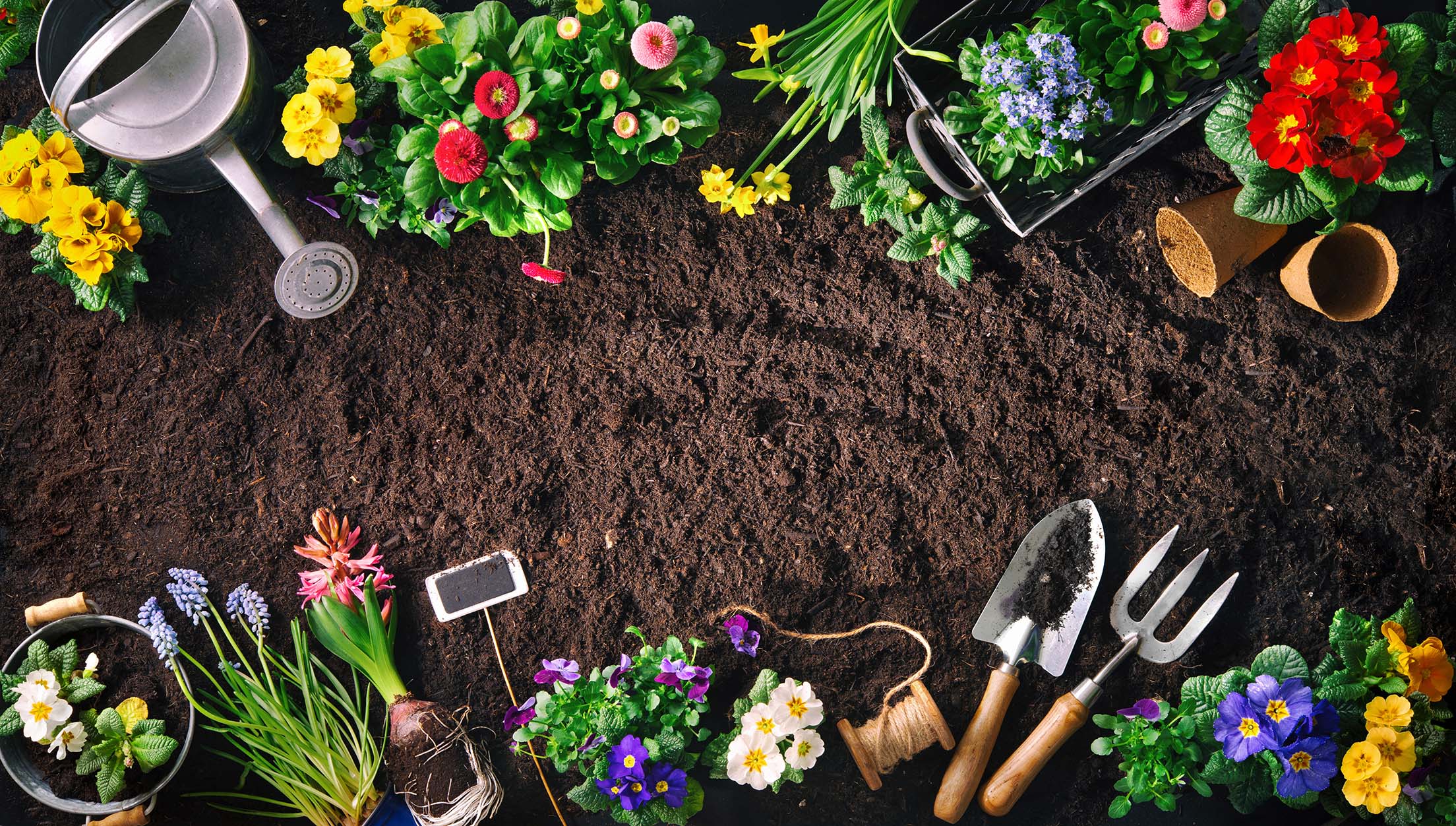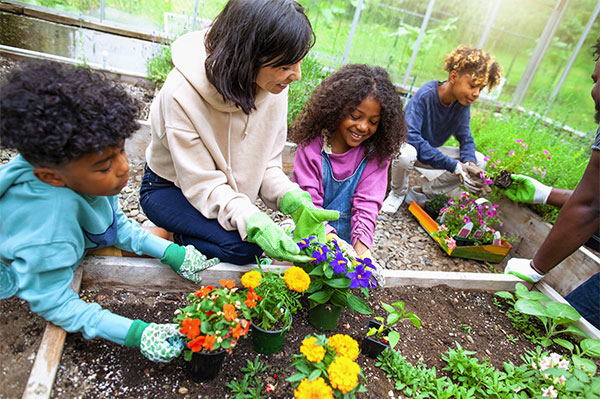Gardening Tips for Captivating Pollinators and Enhancing Biodiversity
Wiki Article
Expert Gardening Tips for Developing a Sustainable and Eco-Friendly Yard
Starting the trip to develop a green and lasting yard involves a series of purposeful options and practices that not just enhance the charm of your space yet additionally contribute positively to the setting. By selecting indigenous plants that are fit to your area, you can minimize reliance on chemical plant foods and pesticides while supplying crucial assistance to local wild animals. Additionally, including water conservation strategies and organic horticulture techniques plays an important role in preserving a healthy environment. To uncover even more skilled insights and functional approaches, let us discover the crucial elements that define an eco mindful yard.Select Indigenous Plants
Selecting indigenous plants for your yard is a basic step toward achieving sustainability. Native plants are inherently adapted to the regional environment and dirt problems, making them more resilient to regional insects and illness. This lowers the demand for chemical pesticides and plant foods, thus reducing ecological effect. Furthermore, indigenous plants typically call for much less water as soon as developed, adding to extra reliable water usage.Past their functional benefits, native plants play an important function in supporting neighborhood biodiversity. They supply crucial habitat and food resources for indigenous wild animals, consisting of pollinators such as butterflies, , and birds. This promotes a well balanced community, which is essential for the wellness of your garden and the surrounding environment.

Implement Water Conservation
Carrying out water preservation techniques is vital for keeping a lasting yard. Efficient water usage not only reduces the ecological impact however likewise makes certain that plants receive sufficient hydration without waste. One efficient approach is to make use of drip irrigation systems, which provide water straight to the plant roots, decreasing dissipation and drainage. This targeted approach can substantially lower water use contrasted to traditional sprinklers.In enhancement, mulching is a beneficial technique for conserving water. By applying a layer of organic mulch, such as timber chips or straw, around the base of plants, garden enthusiasts can minimize dirt dissipation and preserve constant dampness levels. Mulch also helps regulate dirt temperature level and subdues weed development, more adding to plant wellness.
Rainwater harvesting is another sustainable technique. Installing rain barrels or various other collection systems permits garden enthusiasts to catch and store rainwater, which can later on be utilized during completely dry durations. This not only conserves community water but also provides a natural, chemical-free resource for irrigation.
Lastly, picking drought-tolerant plant varieties can dramatically lower water needs. These plants are adapted to prosper in low-water conditions, making them ideal for eco-friendly yards. gardening tips. Carrying out these water conservation techniques will promote a durable, sustainable garden
Use Organic Horticulture Techniques

Pest administration in an organic garden depends on incorporated bug monitoring (IPM) strategies. These include encouraging valuable insects, utilizing natural predators like lacewings and ladybugs, and applying crop rotation to disrupt pest life cycles. Companion planting, where specific plants are expanded with each other to repel insects or draw in advantageous insects, is another efficient method.
Weed control is handled through mulching and hand-operated removal, as opposed to counting on herbicides. Mulch not only subdues weeds however likewise conserves moisture and boosts dirt health and wellness as it breaks down. Organic composts, such as straw, wood chips, and leaves, are particularly beneficial.
Develop Wild Animals Habitats
Creating wild animals habitats within your yard not just enhances biodiversity yet likewise supports the ecosystem's equilibrium. Deliberately spaces that bring in and sustain local animals, you can create a growing micro-ecosystem that profits both plants and animals. Start by including native plants, as these are fit to your regional climate and supply vital food and shelter for wild animals. Native vegetation supports a variety of bugs, birds, and tiny creatures, contributing to the ecological network.Take into consideration adding a water feature, such as a pond or birdbath, to provide a regular water source. Water components attract a selection of types, from amphibians to pollinators, boosting the garden's vitality. In addition, installing birdhouses, bat boxes, and insect resorts uses secure nesting sites and urges biodiversity.
Leave some locations of your yard uninterrupted, enabling fallen leave trash and dropped branches to collect. By focusing on these lasting techniques, your yard can come to be a refuge for neighborhood wild animals, advertising environmental health and wellness and sustainability.
Method Composting and Mulching
A vital facet of lasting gardening, composting and mulching, go to this web-site substantially improves soil health and decreases waste. Composting involves reusing natural products such as kitchen area scraps, turf cuttings, and leaves. These materials decompose to form nutrient-rich garden compost, which works as an all-natural plant food. Unlike artificial plant foods, garden compost improves the dirt with necessary nutrients and valuable microbes, promoting a healthier garden ecosystem.Mulching, on the various other hand, entails covering the dirt surface area with not natural this hyperlink or natural materials, such as straw, timber chips, or shredded leaves. This technique provides numerous advantages: it preserves soil wetness, subdues weed growth, and moderates dirt temperature. Mulch additionally gradually breaks down, including organic matter to the dirt and further improving its fertility.
To exercise reliable composting, ensure your compost heap has an equilibrium of green materials (abundant in nitrogen) and brownish materials (rich in carbon), preserving ample aeration and moisture. gardening tips. Regularly turning the stack increases decomposition. For mulching, apply a 2-3 inch layer around plants, ensuring it does not straight contact stems or trunks to avoid rot
Final Thought

Selecting indigenous plants for your garden is a basic step towards achieving sustainability.In addition, integrating indigenous plants can improve the visual charm of your yard. These plants are adapted to grow in low-water conditions, making them excellent for environment-friendly gardens. Carrying out these water preservation techniques will certainly foster a durable, lasting garden.
In verdict, establishing a lasting and environmentally friendly you could look here yard entails the tactical choice of indigenous plants, the adoption of water preservation strategies, and the implementation of natural gardening methods.
Report this wiki page